Reflecting on the 30th Anniversary of EASTS
Recently, Sensei, Salsa-san, and I had the privilege of attending the Eastern Asia Society for Transportation Studies (EASTS) 30th Anniversary Commemorative Event held in Tokyo. This significant gathering brought together experts and professionals to reflect on EASTS’s three decades of achievements and to discuss the organization’s role in shaping the future of transportation across Asia. Here, I had the unique opportunity to meet and connect with esteemed figures in the field, including Professor Saksith from Chulalangkorn University, the current President of EASTS, Dr. Andhika from the University of Indonesia, and Mr. Tory, President of the Indonesian Transportation Society. Among the attendees, I also met Liu, a D3 student from the Institute of Science Tokyo, with whom I formed a promising friendship.
The program at the 30th Anniversary event was comprehensive, beginning with a joint seminar where transportation experts from Taiwan, the Philippines, and Japan presented on disaster resilience and the impact of transportation infrastructure on vulnerable populations. Later, a symposium addressed the role of EASTS in navigating the future of transportation, with a keynote by Prof. Bambang Susantono, Indonesia’s Special Envoy to the President. His lecture, titled “Nusantara: Building Indonesia’s Future Capital – Lessons and Challenges,” explored Indonesia’s ambitious capital development project. He’s also the former Vice President of the Asian Development Bank (ADB). The day ended with a lively panel discussion on how EASTS aims to lead Asia into a new era of mobility focused on sustainability, inclusiveness, and resilience.
The following day, Salsa-san and I had the honor of guiding Prof. Bambang Susantono and his secretary through the University of Tokyo. We visited the renowned Yasuda Auditorium, enjoyed lunch at Chuo Dining Hall and have meeting with Shinji Sensei from Institute for Future Initiatives before Prof. Bambang continued to his meeting with a Sumitomo board member.
As EASTS approaches another milestone, I feel a special excitement for the upcoming biennial meeting of EASTS, which will be hosted in my home country. I look forward to the chance to join my colleagues and friends again, contributing to the transformative conversations that will shape Asia’s transportation landscape.
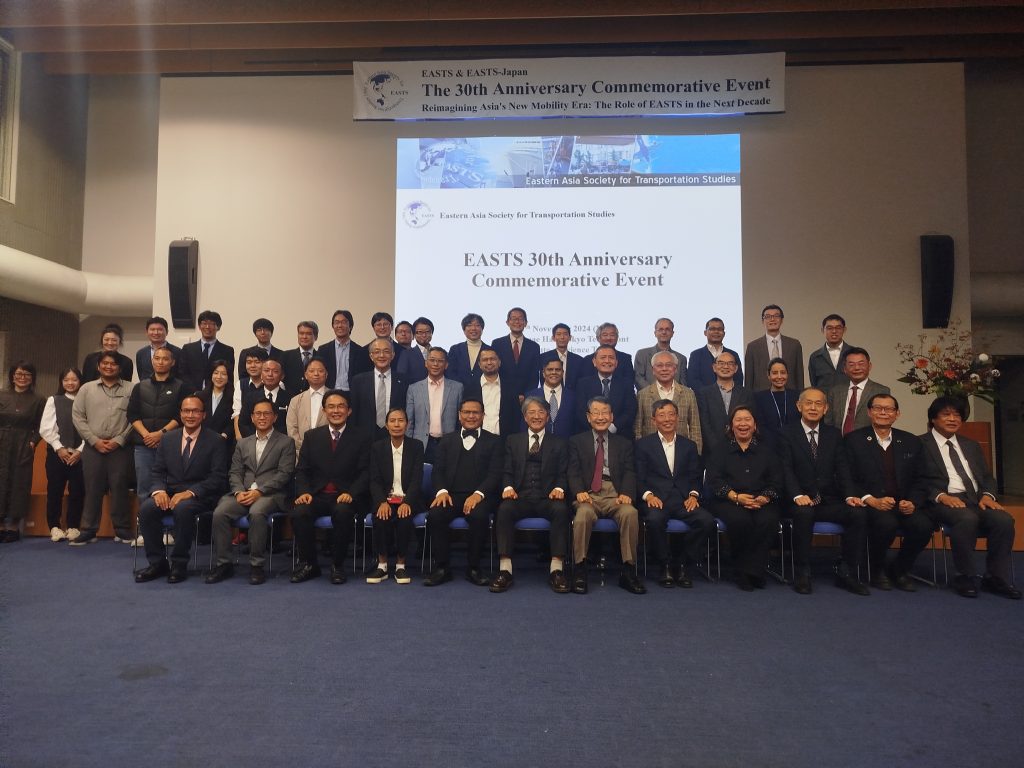
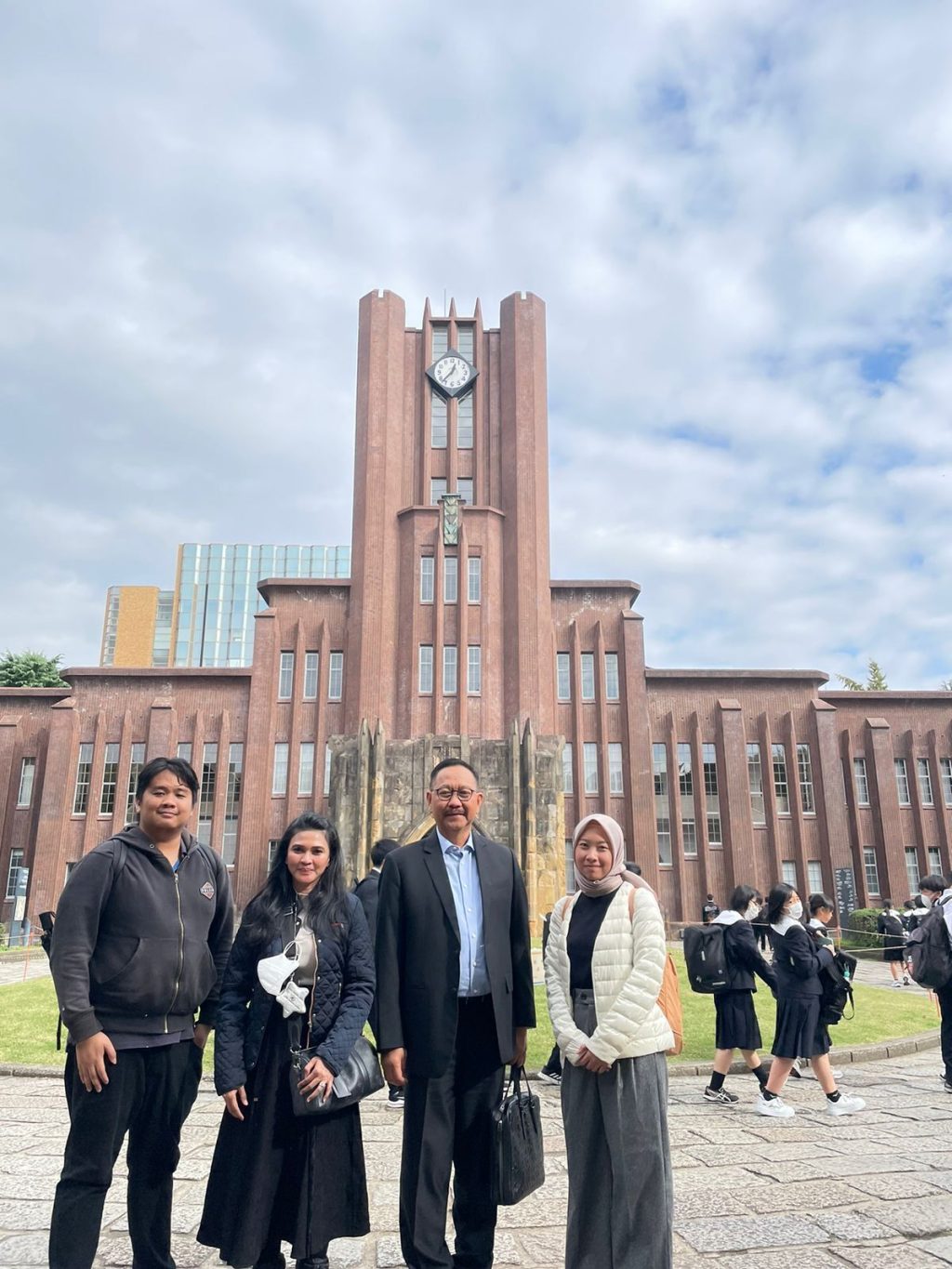
[Aulia Rahman]
A Lecture on Dynamic Wireless Charging
Recently, Ms. Kaneko, an alumna of our laboratory who is actively working at the Mitsubishi Research Institute, held a lecture on the topic of dynamic wireless charging technology for our lab.
We learnt more about the various types of dynamic wireless charging, the reasons why wireless charging is being promoted in Japan, the challenges in its implementation, and the timeline for its commercialization. This gave me a clearer understanding of the background to my research. With this deeper understanding, my passion for the research has grown even stronger.
I will continue to push forward until the submission of my graduation thesis.
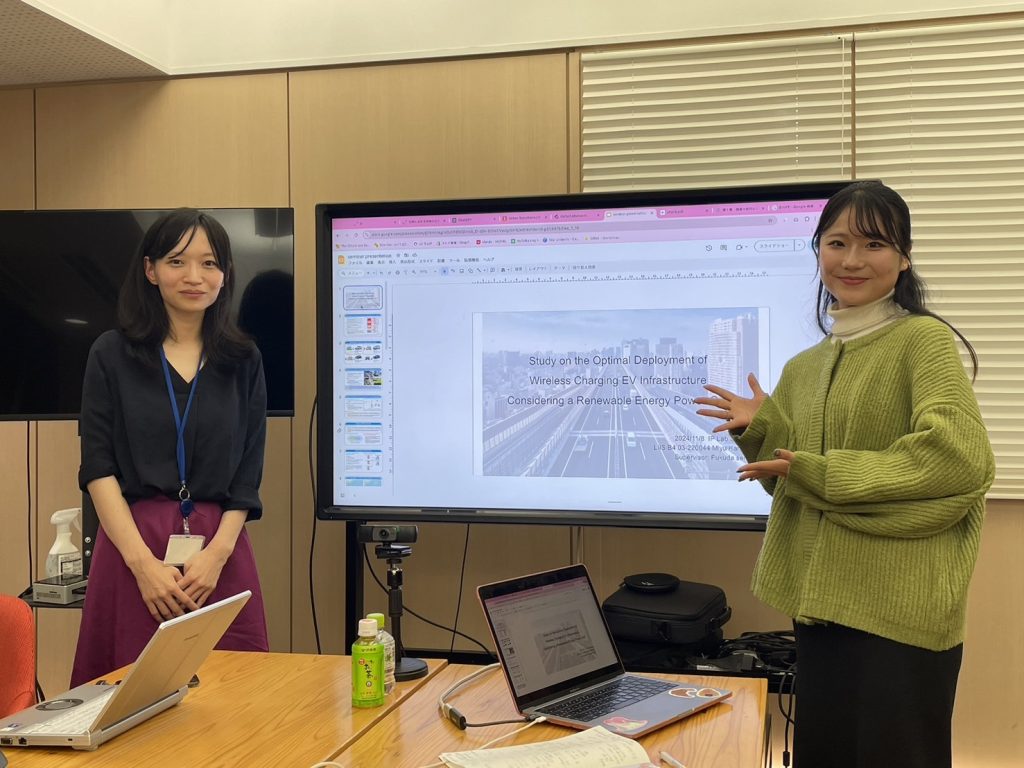
[Kanaoka]
the first International Symposium on Intelligent Technology for Future Transportation (ITFT 2024)@Helsinki
I’m Kaori, a second-year master’s student.
I participated the first International Symposium on Intelligent Technology for Future Transportation in Helsinki on the 20th October.
I presented a research titled “Virtual Reality Experimental Study on Bicycle Environment Assessment Using One-Boundary Drift-Diffusion Model”.
This research was a collaborative project with Professor Yusak and Ph.D. student Mr. Shun at BOKU in Vienna, building on the VR experiment I conducted during my stay there last year. It was especially meaningful to present this work, as it marks my first collaborative research. I am also grateful to Dr. Aivars Rubenis for his insightful questions.
This symposium was my first experience presenting at an international conference. I gained so much, not only from the questions raised about my research but also from the diversity of research shared and the casual conversations with other attendees.
With this experience, I am even more motivated to improve our research. Thank you for this valuable opportunity.
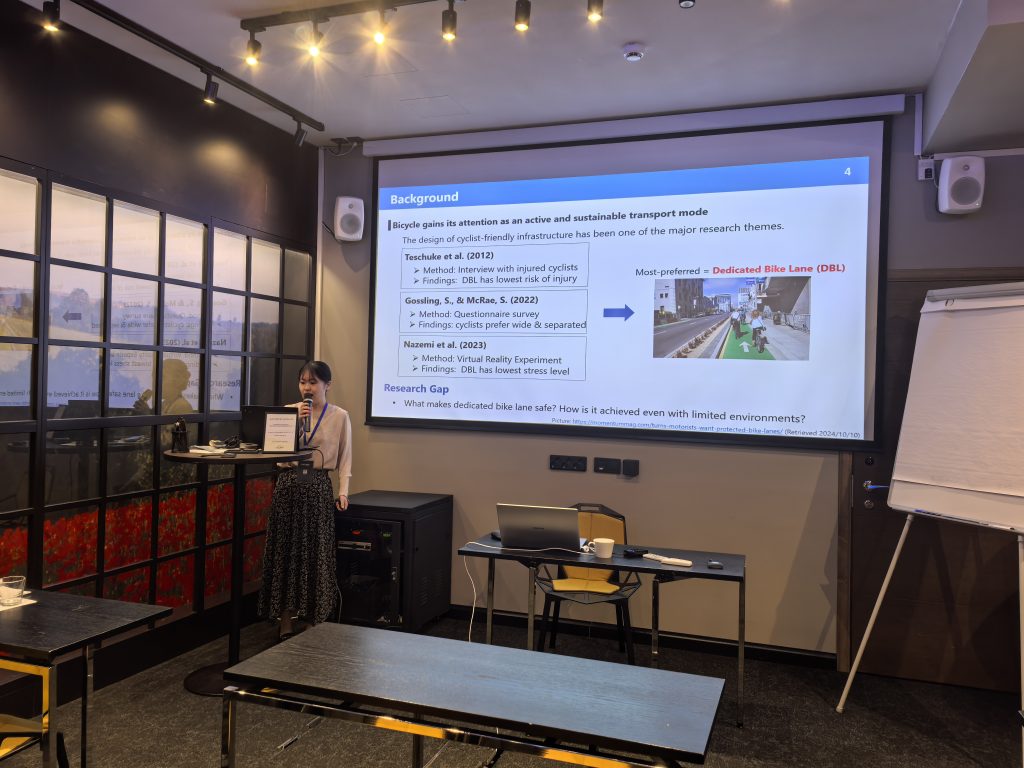
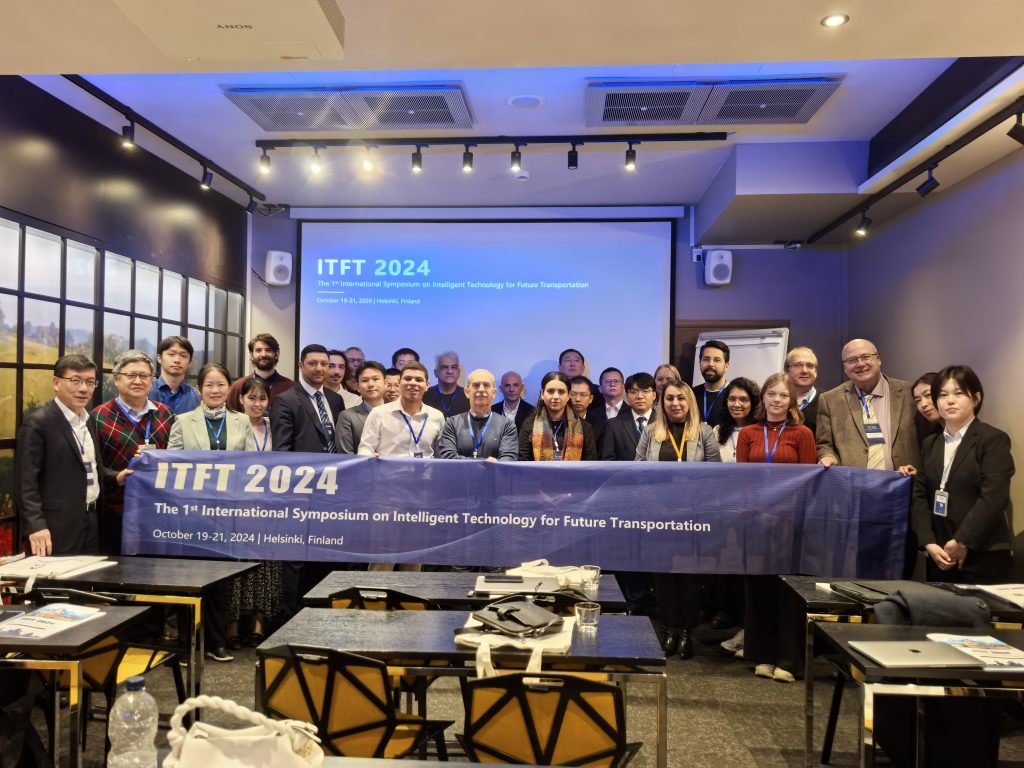
[Nakamura]
| Conferences Lab Life by Students
A Journey From Vienna to Southampton
I’m Kaori, a second-year master’s student.
From the 7th to the 24th October, I visited DAVeMoS in BOKU in Vienna, Austria and Transportation Research Group in Southampton University in UK with the support from Musha Shugyo Program funded by the faculity of Engineering, UTokyo.
This is my second visit to DAVeMoS, following my three-month stay there last year. During this 2 week visit, we continued our collaborative research discussions, which was both productive and inspiring.
I was also happy to reunite DAVeMoS team; sharing lunch with everyone in their dining was a cherished daily tradition where we discussed weekend plans and life updates—a refreshing break from our busy workdays. On my last day, we had the pleasure of welcoming Dr. Gamze Dane from Eindhoven University of Technology in the Netherlands. Her presentation on her team’s VR research was incredibly motivating and added a new perspective to my own research.
I visited the Transportation Research Group for the first time. I had a discussion with Professor Ioannis and a presentation in their group seminar. Although the weather outside was cold and drizzly, the warm welcom and the “hot” seminar with tons of questions made the day enjoyable and rewarding.
Over the past two years of my master’s program, I’ve had opportuniries to visit the laboratories and cities across Europe, which has truly enriched my experience and deepened my passion for transportation studies. I’m more motivated than ever to make my thesis the best it can be.
I want to express my sincere gratitude to Professor Yusak and Professor Ioannis for hosting me, and to Professor Daisuke for supporting my international academic journey.
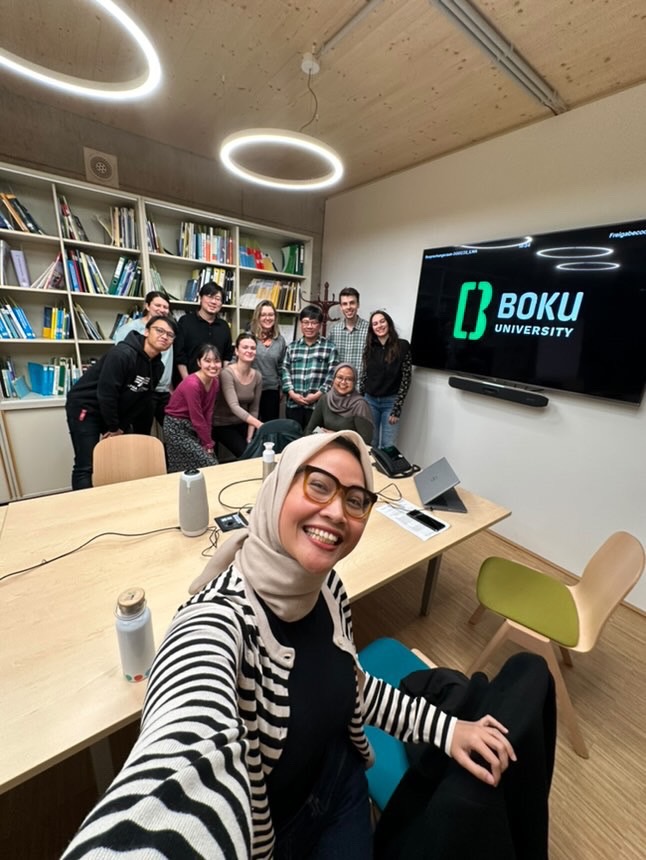
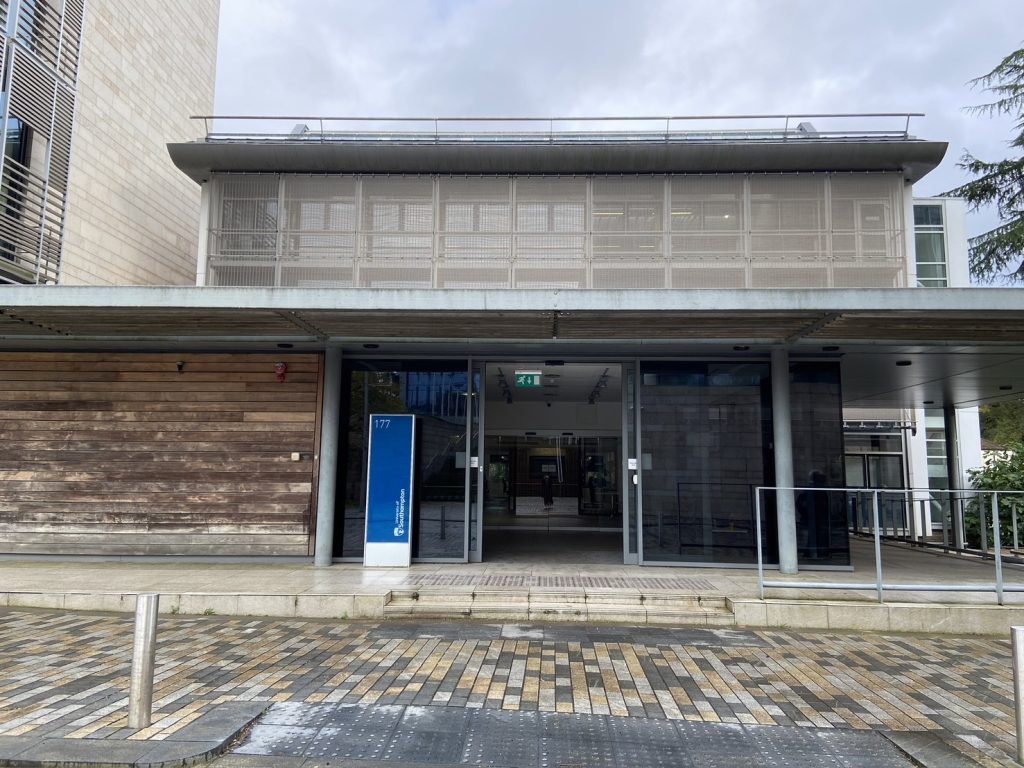
[Nakamura]
Message from new members(2)
Hi! I’m Sakib Shahrior Fahim, a fresh arrival in Japan, where I’m excited to pursue my Master’s in Civil Engineering at the University of Tokyo. Having grown up in the bustling metropolis of Dhaka, the capital of Bangladesh, where traffic delays cost residents an average of one hour of productivity daily, my journey into transportation engineering began with a mission to improve these numbers and make my city more livable. Now, as part of the Laboratory for Innovative Infrastructure Systems (LIIS) under the guidance of Fukuda Sensei, I’m diving deeper into the fascinating world of transportation systems. My goal? To contribute to more efficient, energy-conscious, and sustainable transportation solutions for developing countries, like Bangladesh’s, and beyond.
Looking forward to the adventures and challenges ahead!
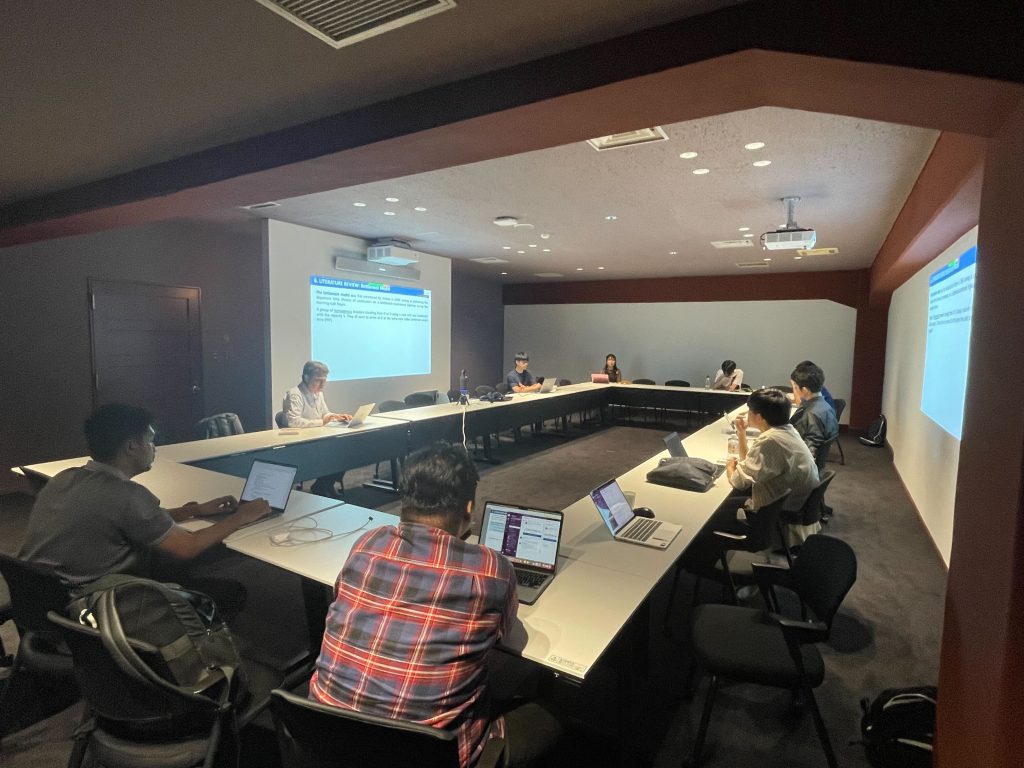
[Sakib Shahrior Fahim]
Message from new members (1)
Adaptation and Welcome Experience at Fukuda Lab
After arriving at the University of Tokyo on October 2nd, I was warmly welcomed into the Fukuda Lab, which has played a vital role in my smooth transition into academic and everyday life in Japan. The cool autumn weather that greeted me upon arrival added a refreshing touch to this new chapter of my life. The crisp air and the changing colors of the leaves around the campus reminded me that I was stepping into a new season, personally and professionally.
One of the first people to help me incredibly was Uemachi-san. Navigating city hall administration and handling paperwork can be overwhelming in a new country, but everything went much more smoothly with his guidance. From the moment I arrived, he ensured I had all the necessary information, made the arrangements for my residency registration and assisted me in understanding the essential processes for settling in.
The lab members have also been incredibly supportive. They quickly offered help and advice related to academic work or adapting to life in Tokyo. Everyone’s friendliness and readiness to assist me in getting used to the culture, environment, and university systems truly made me feel at home.
In addition to the academic support, the social integration has also been fantastic. A few days after my arrival, we had a Nomikai (a casual drinking gathering) at a local Yakitori restaurant with the lab members. It was my first Nomikai in Japan, and it was a wonderful experience to share delicious grilled skewers and drinks in a relaxed atmosphere. We talked about everything—from research topics to life in Japan—and it helped me feel more connected to my colleagues. The warm camaraderie and laughter we shared at the Yakitori restaurant made me feel like I was part of the lab’s community. It was a celebration and a reflection of how the lab fosters connections, helping everyone integrate smoothly.
Now, two weeks into my journey, as the autumn breeze continues to cool the city, I already feel a strong sense of belonging. The teamwork and collaborative spirit within the Fukuda Lab are inspiring, and I am excited to contribute to the lab’s ongoing projects. With the help of the department and my colleagues, I am confident this will be a productive and enriching experience at the University of Tokyo!

[Aulia Rahman]
Welcome Aulia & Sakib!!
This fall, two new international students have joined the Fukuda Lab.
Aulia Rahman, a Ph.D. student from Indonesia, and Sakib Shahrior Fahim, a master’s student from Bangladesh.
Both of them received support from the department’s international student office and lab members from the day they arrived, ensuring a smooth start to their student life at the University of Tokyo.
The day after they arrived, we held a welcome party in the IP room. We ordered lunch boxes, gathered around the table, and enjoyed a friendly chat, with the two lab secretaries joining us as well.
With these new additions, our lab now has 11 students. We’re excited to work with them, as they bring valuable experience in transportation analysis from their countries. We’re looking forward to a productive semester ahead!
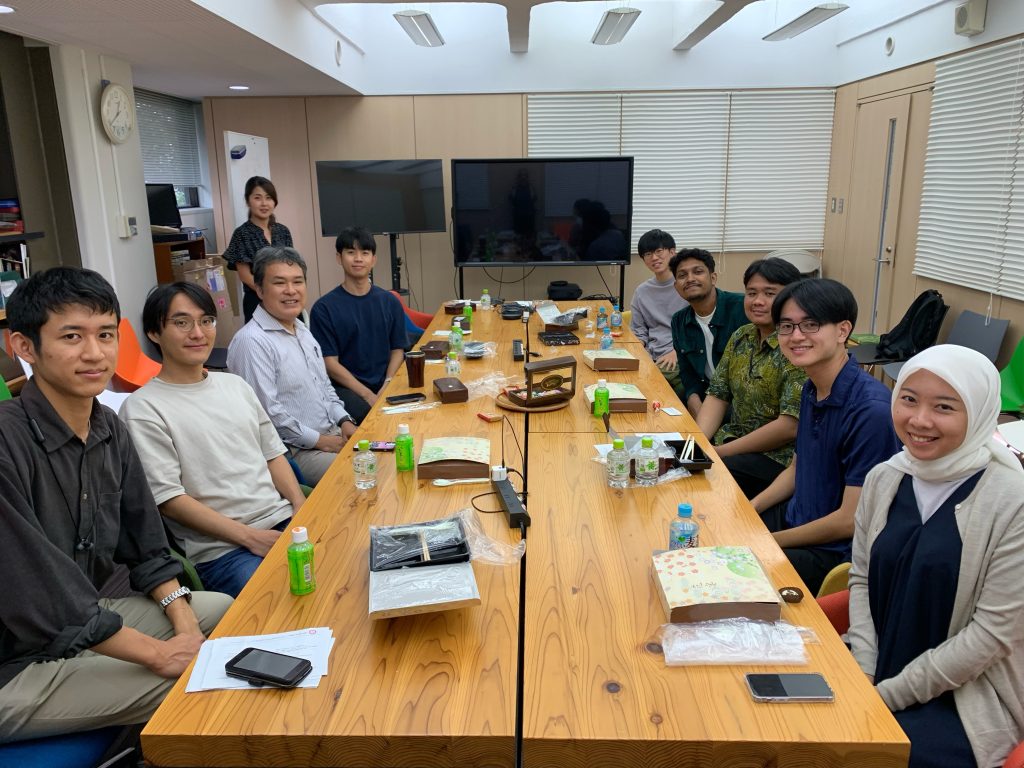
[Uemachi]
International Project Group Trip @ Okutama
The international project group, which our lab is a part of, organized an annual group trip to Okutama.
On the first day, we had a BBQ at a campsite, and on the second day, we toured Lake Okutama and the Ogouchi Dam.
For the BBQ on the first day, we tried our best to make a culturally inclusive BBQ, fitting for our international members. However, from shopping to cooking, we faced many problems. I didn’t know until today that pork extract is used in yakisoba sauce! Despite such challenges, we had a wonderful time together, and it was a great opportunity to strengthen bonds within the group.
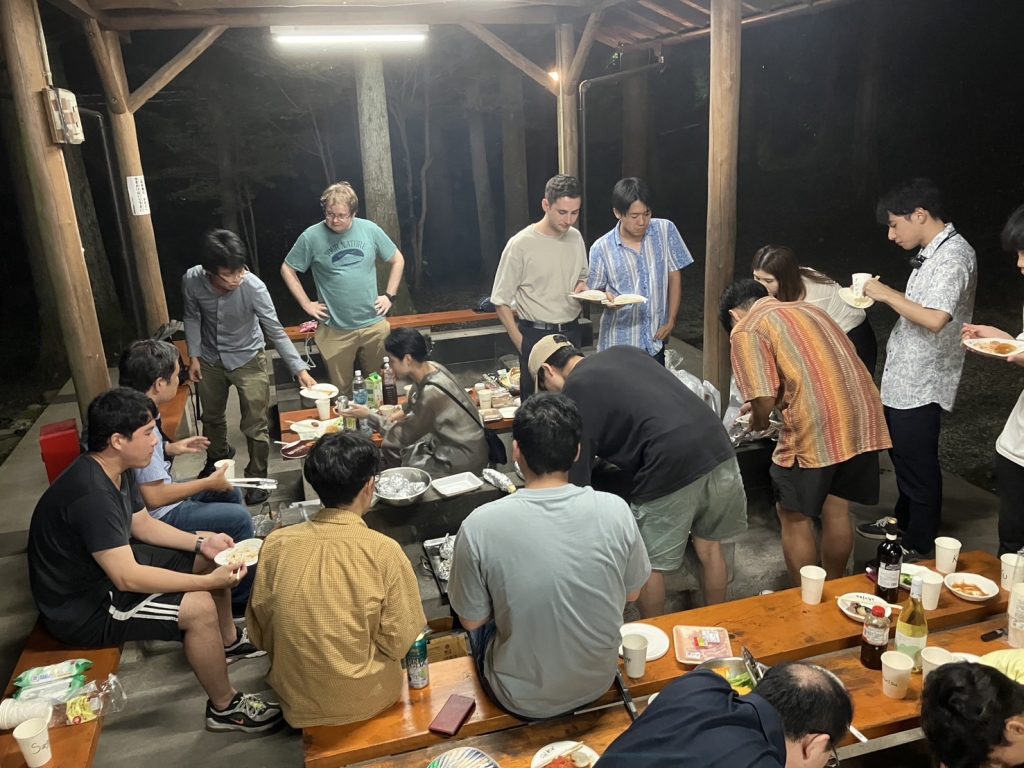
On the second day, we split into two groups—one enjoyed the hot springs, while the other went hiking. Afterward, we found a local performing arts festival near Okutama Station and had the chance to watch a bit of traditional dance. At Ogouchi Dam, we enjoyed “dam curry” as well as the dam tour guided by Dr. Daniel, who specializes in energy research.
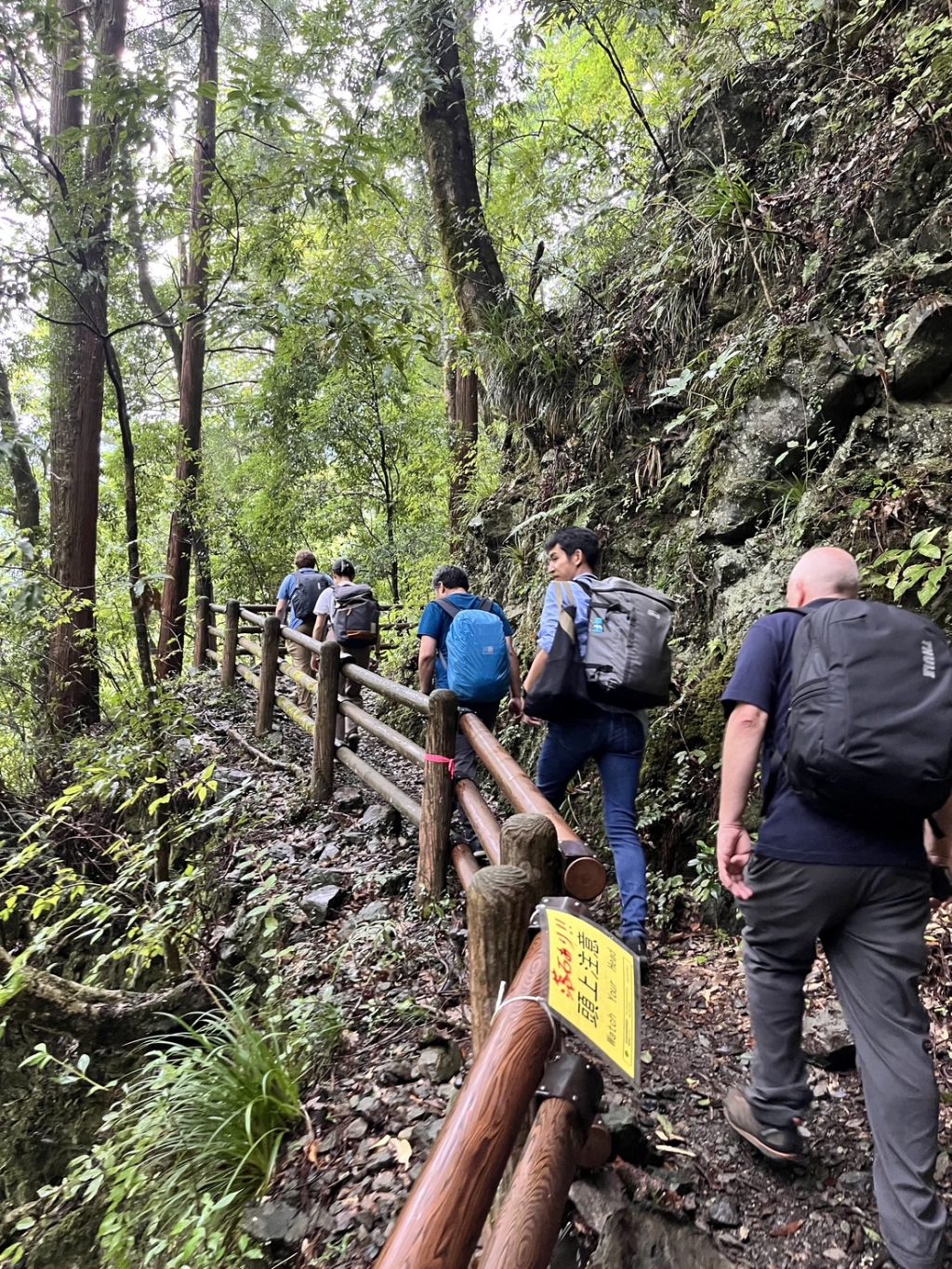
I’m currently a second-year master’s student, and this was my first time joining the international project group trip. I was really happy to get closer to other lab members whom I usually don’t talk to much. Though I’ve lived in the Kanto area most of my life, this was my first visit to Okutama, and I was surprised by how much nature it has—it’s become one of my favorite spots.
I’m motivated to keep working hard on my research for the rest of the year!

[Nakamura]
Joint Semiar Camp @ Funauki, Iriomote
From 9/17 to 9/20, we held a joint seminar with Professor Kamiya’s laboratory from the University of the Ryukyus in Funauki, Iriomote Island, Okinawa.
On the second day, all the students gave research presentations, making it a stimulating seminar. Members of Professor Fukuda’s lab were particularly impressed by the progress made by Professor Kamiya’s lab in their analyses. The breadth of research topics presented was much wider than our lab, which evoked lively discussions and provided us with fresh inspiration.
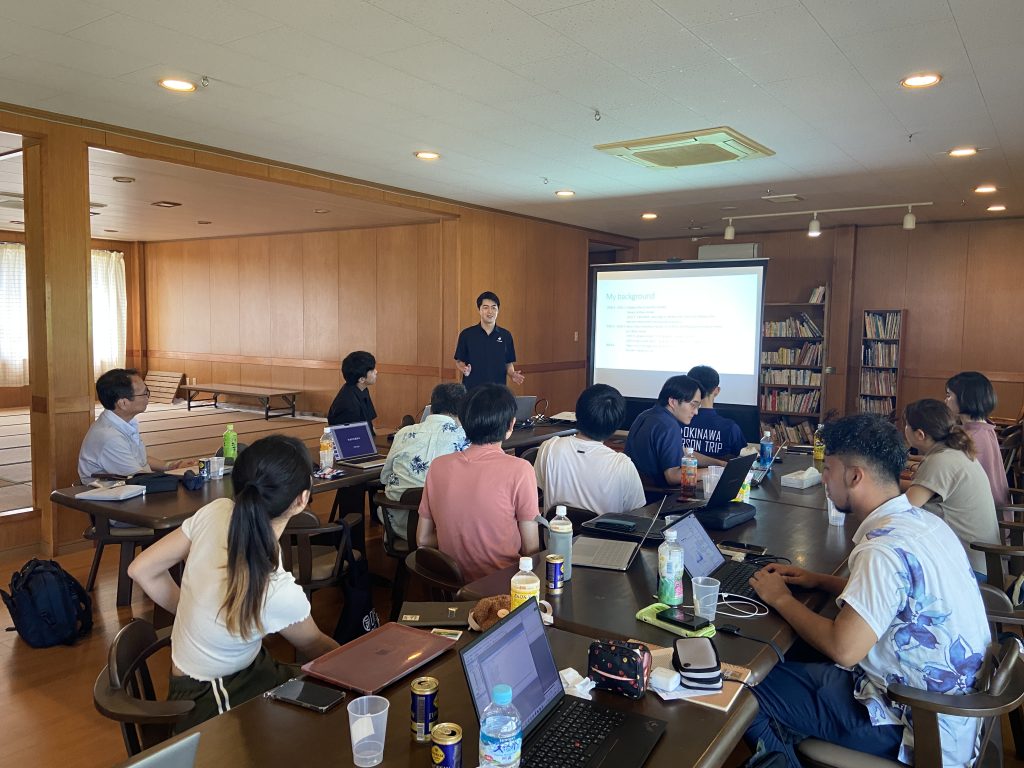
Additionally, Mr. Suga from the Regional Futures Research Center, as well as Mr. Yamanaka and Mr. Nakamura from CHUO KENSETSU CONSULTANT, Co.,Ltd. shared insights about their work and their projects on Iriomote Island.
Mr. Ikeda, who took care of us in Funauki, shared his thoughts on the inconveniences faced there. His words left a deep impression on all participants, serving as an important reminder for us not to focus solely on pursuing convenience in transportation and urban planning.
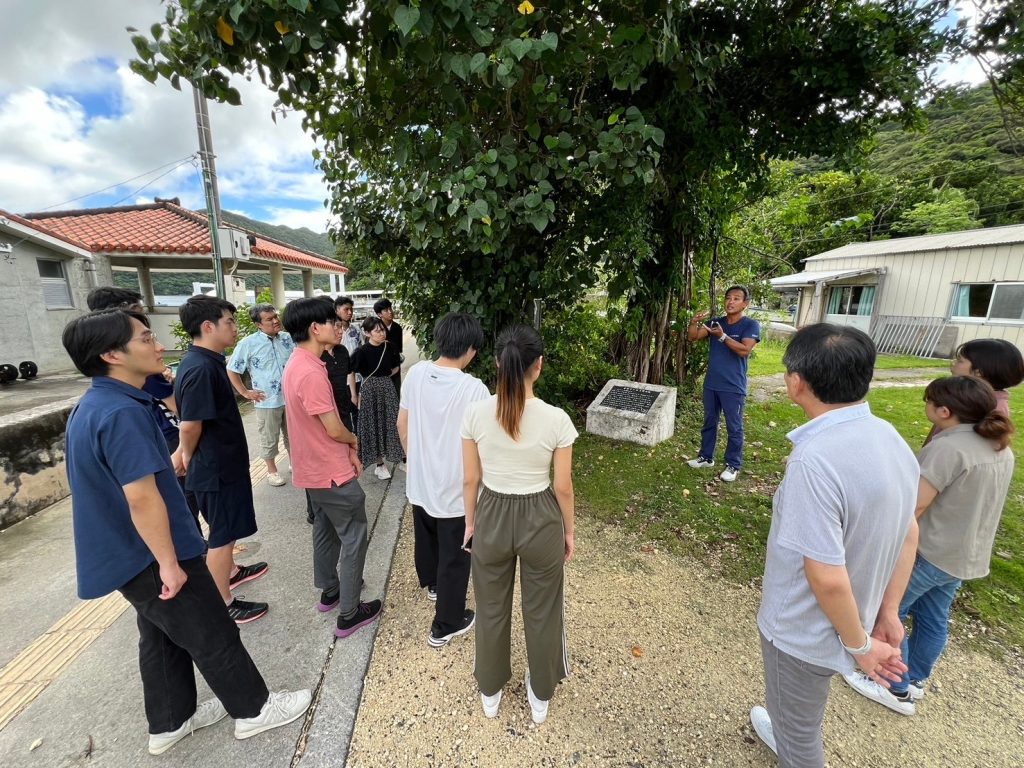
For all of us, this was our first visit to Iriomote Island. Beyond the insights we gained from the seminar and the talks, everything we saw on the way, the time we spent preparing for the seminar, and all the conversations we had will serve as valuable experiences for our future research and student lives.
We would like to express our heartfelt thanks to Professor Kamiya, Professor Fukuda, and everyone involved for providing us with this opportunity.
[Nakamura]
International Symposium on Integrated land use/transport models for carbon neutral strategies in Osaka
At the International Symposium on Integrated land use/transport models for carbon neutral strategies in Osaka, held at Osaka University’s Nakanoshima Office, our lab’s graduate Keita Hasegawa presented.
This is a theoretical study using a two-city model of the feasibility of dual residence between urban and rural areas and the role of the central government.
Thank you to Dr. Joanna Ji of the Technical University of Munich, who asked a question, and to Dr. Masatoshi Kii of Osaka University, who organized the symposium. (Text by Fukuda)
Symposium website:
https://www.mos.ed.tum.de/tb/workshops/osaka-symposium-2024/
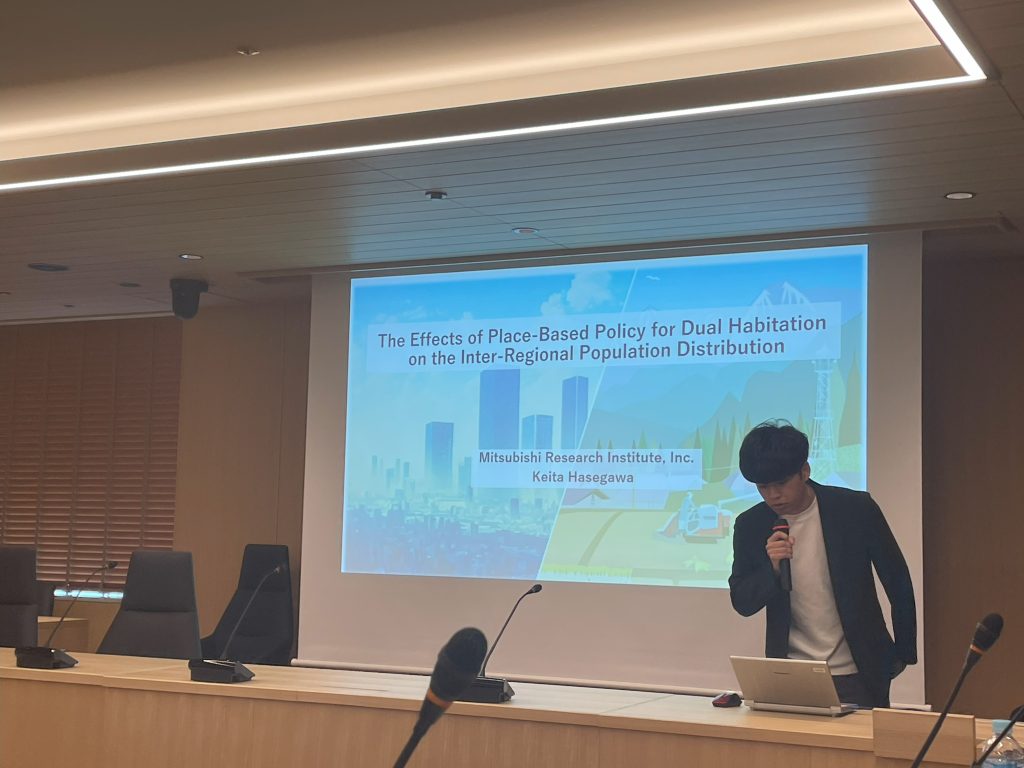
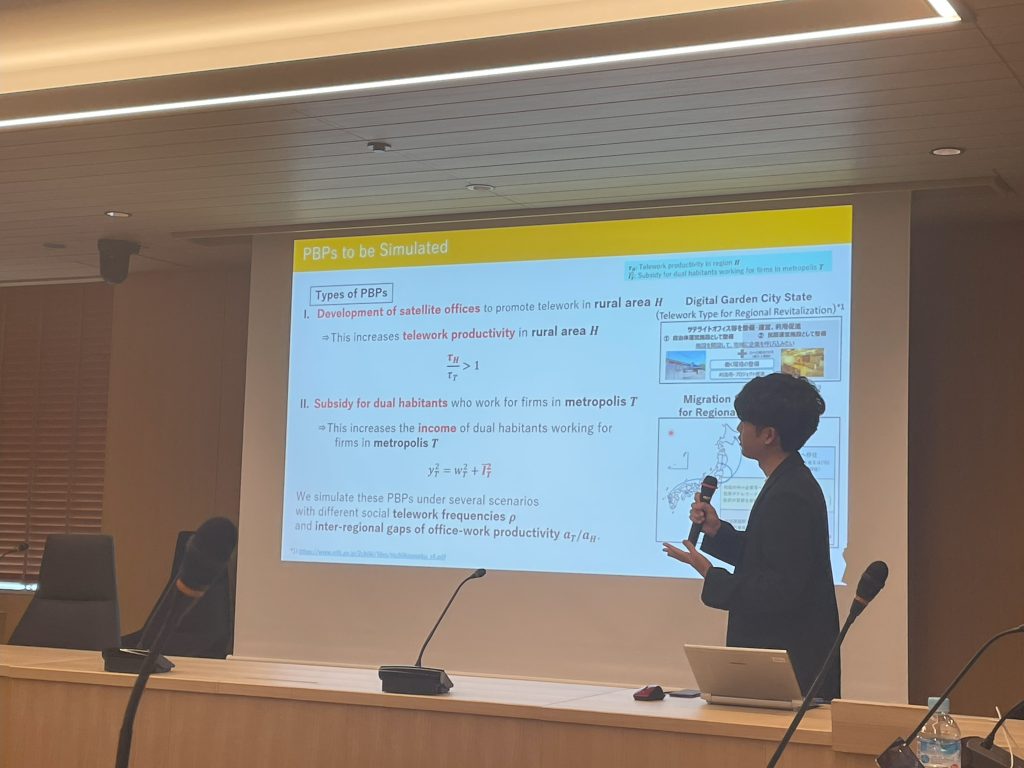
| Conferences Lab Life by Students



